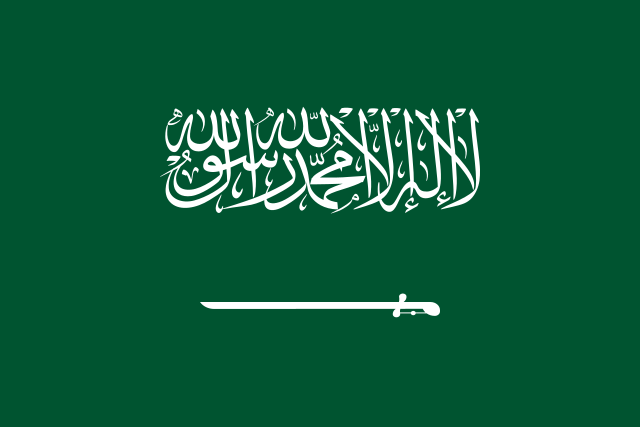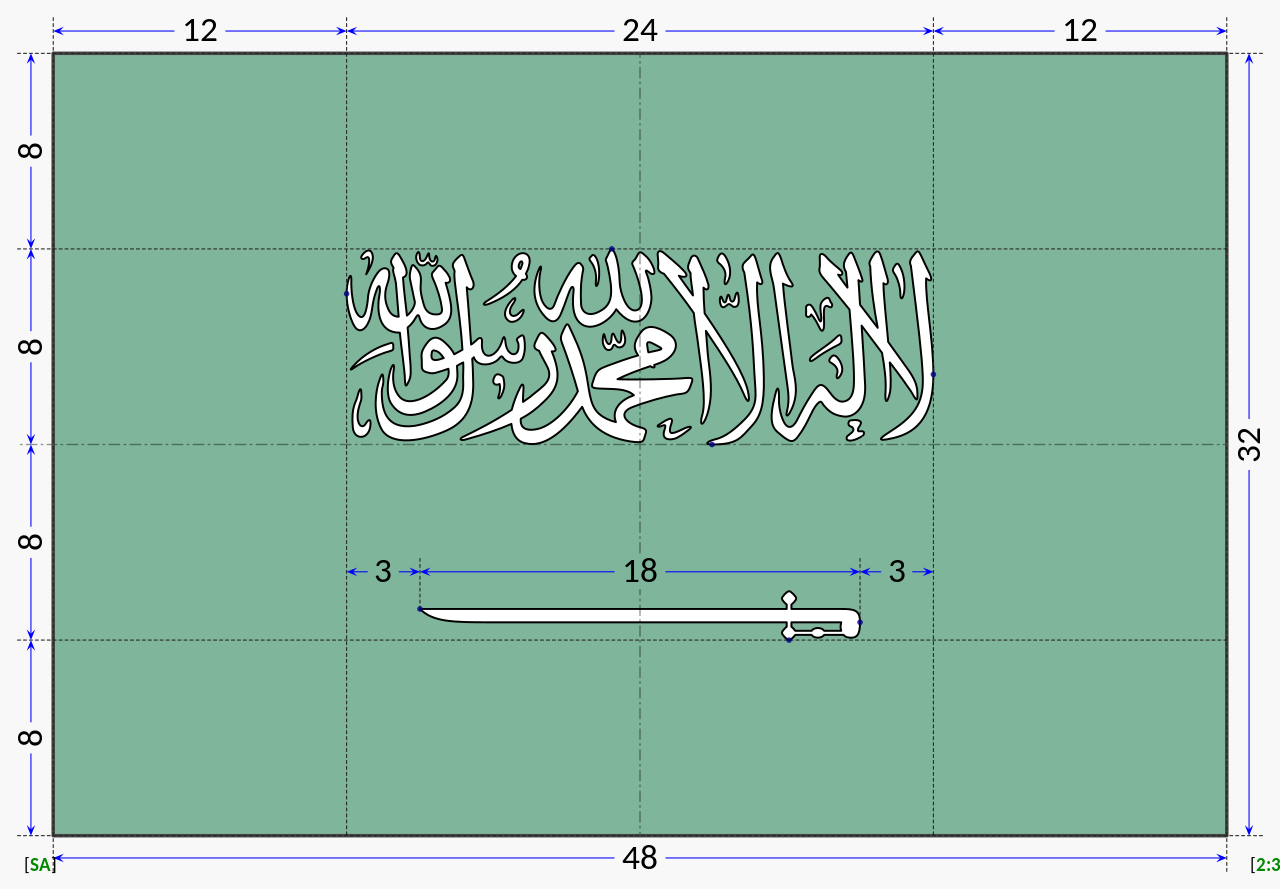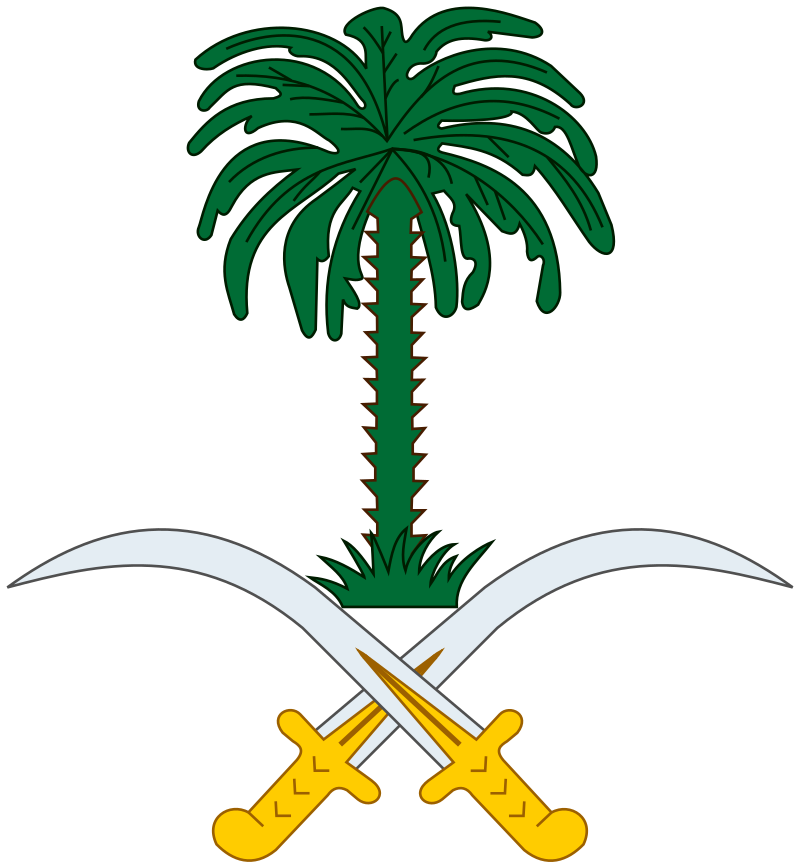전시관 내에서는 이어폰을 이용해주세요.
다문화박물관 사우디 4

The flag of Saudi Arabia is entirely green except for the central portion which bears an Arabic inscription and a sword in white. The inscription is the Islamic creed, or shahada: "There is no god but Allah; Muhammad is the Messenger of Allah". The current design has been used by the government of Saudi Arabia since 15 March 1973.
The Arabic inscription on the flag, written in the calligraphic Thuluth script with the current one by Saleh al-Mansouf, is the shahada or Islamic declaration of faith:
"There is no god but God; Muhammad is the Messenger of God."
History
The precursor states to Saudi Arabia were Nejd and Hejaz. The state flag of Nejd followed today's Saudi flag pattern very closely. The state of Hejaz followed the patterns seen in countries like Palestine and Sudan. Caliphates such as the Rashiduns, the Umayyads and the Abbasids used other flags with only one color. After the Siege of Baghdad in 1258, the primary caliphate became the Mamluk Sultanate. In 1517, the Ottomans invaded Egypt and inherited Hejaz and ruled it until the Arab Revolt (1916–18). From 1902 until 1921 a different Arabic inscription was used. One of the primary opponents to the Saudis was the Emirate of Jabal Shammar of the Al Rashid family in the north of the peninsula, until their defeat in 1921.
The Saudi Arabian national emblem was adopted in 1950. According to the Saudi Basic Law, it consists of two crossed swords with a palm tree in the space above and between the blades.
The two swords represent the Kingdom of Hejaz and the Sultanate of Nejd and its dependencies, which were united under Ibn Saud in 1926, or strength, stamina, and sacrifice.
The crest represents that prosperity can only be had through Justice.
The palm stands for growth, vitality, and prosperity and the crossed swords represent Justice. The palm tree represents the Kingdom's assets which are defined as its people, heritage, history, and resources natural and non-natural. Thus, the palm is shown to be guarded by the two swords, which represent the forces to be used in defence of the nation.
The Arabic inscription on the flag, written in the calligraphic Thuluth script with the current one by Saleh al-Mansouf, is the shahada or Islamic declaration of faith:
"There is no god but God; Muhammad is the Messenger of God."
History
The precursor states to Saudi Arabia were Nejd and Hejaz. The state flag of Nejd followed today's Saudi flag pattern very closely. The state of Hejaz followed the patterns seen in countries like Palestine and Sudan. Caliphates such as the Rashiduns, the Umayyads and the Abbasids used other flags with only one color. After the Siege of Baghdad in 1258, the primary caliphate became the Mamluk Sultanate. In 1517, the Ottomans invaded Egypt and inherited Hejaz and ruled it until the Arab Revolt (1916–18). From 1902 until 1921 a different Arabic inscription was used. One of the primary opponents to the Saudis was the Emirate of Jabal Shammar of the Al Rashid family in the north of the peninsula, until their defeat in 1921.
The Saudi Arabian national emblem was adopted in 1950. According to the Saudi Basic Law, it consists of two crossed swords with a palm tree in the space above and between the blades.
The two swords represent the Kingdom of Hejaz and the Sultanate of Nejd and its dependencies, which were united under Ibn Saud in 1926, or strength, stamina, and sacrifice.
The crest represents that prosperity can only be had through Justice.
The palm stands for growth, vitality, and prosperity and the crossed swords represent Justice. The palm tree represents the Kingdom's assets which are defined as its people, heritage, history, and resources natural and non-natural. Thus, the palm is shown to be guarded by the two swords, which represent the forces to be used in defence of the nation.
00:00
01:50
09
다문화박물관 사우디 4



